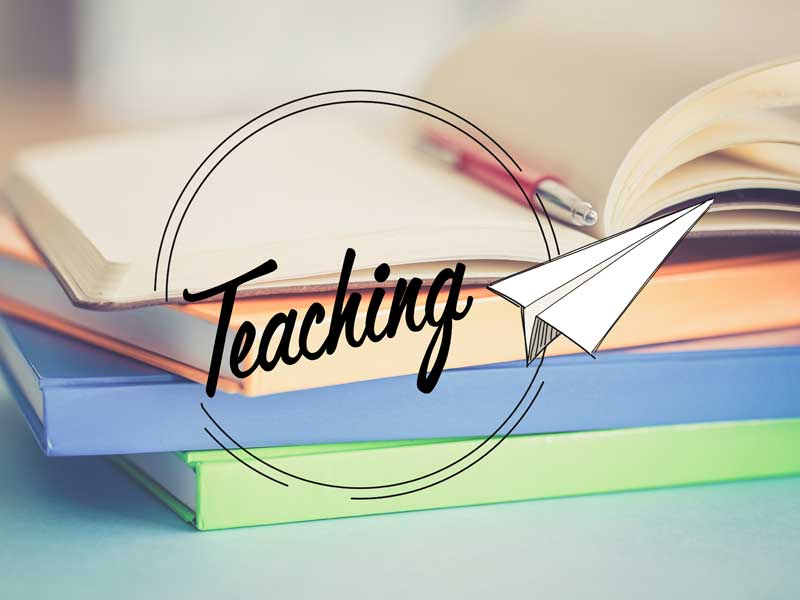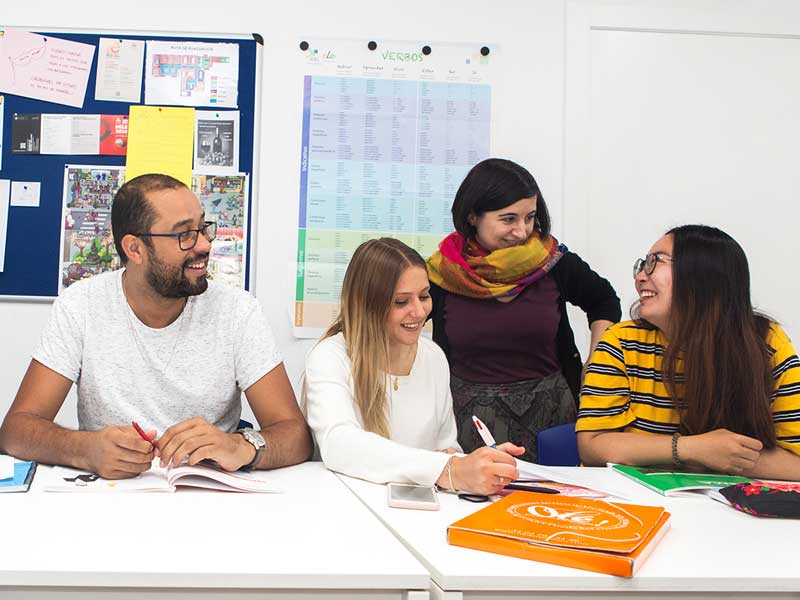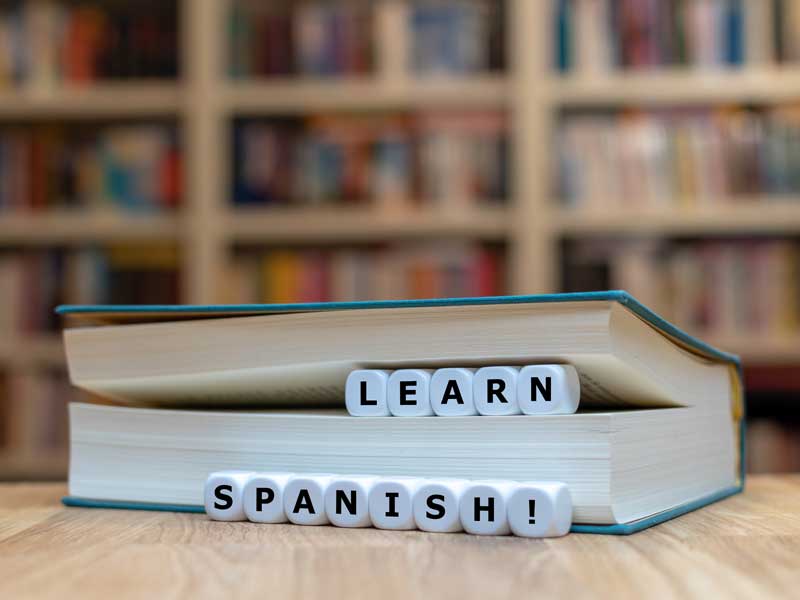
Based on an immersive, communication-based approach to language acquisition students learn the Spanish grammar step by step according to the Common European Framework of Reference (CEFR) accompanied by writing, listening, vocabulary and conversation practice. Class activities, for example, include reading newspaper articles, practicing telephone conversations and watching Spanish films followed by analysis and debate. Any Spanish course at Olé Languages is based on an immersive method of teaching. From beginning to end of each lesson the only language spoken in the class room is Spanish so that students learn fast to communicate effectively in everyday, real-life situations.
At Olé Languages, we make our classrooms lively and interactive spaces which provide all the ideal elements for you to quickly attain your language-learning goals through a variety of tasks and activities. Olé Languages is accredited by the Instituto Cervantes.
Small study groups are decisive for the learning success. This is why the number of students per class is limited to 9 (on an exceptional basis up to 10) and the average class size ranges between 5 and 6 students so that the teachers can answer questions inidividually and each student gets the change to practice their newly acquired knowledge and vocabulary continually.


The materials necessary for the classes are provided by the school and are included in the enrolment fee. Once students have completed a level and change to the next higher one, they will need a new course book that can be bought at the school for the price of 18 €. Olé Languages uses primarily the course book Prisma published by Edinumen that follows the Common European Framework of Reference for Languages and the guidelines of the Instituto Cervantes. It not only has a strong communicative focus but its structure also allows the students to follow up on specific grammatical issues on their own. In addition to the course book, the students are engaged in a variety of activites, as for example, reading magazines and newspaper articles, watching excerpts from Spanish films and news clips, as well as listen and conversation exercises.
At Olé Languages we teach within the CEFR, the Common European Framework of Reference for Languages: Learning, Teaching, Assessment. The CEFR is a guideline used to describe achievements of learners of foreign languages across Europe. It was established by the Council of Europe as the main part of the project "Language Learning for European Citizenship" between 1989 and 1996. The Common European Framework divides learners into three broad divisions and each division into two sub categories. The six reference levels are becoming widely accepted as the standard for grading an individual's language proficiency.
A Basic User
A1 Breakthrough ( 9 weeks )
A2 Waystage ( 10 weeks )
B Independent User
B1 Threshold ( 10 weeks )
B2 Vantage ( 10 weeks )
C Proficient User
C1 Effective Operational Proficiency ( 20 weeks )
C2 Mastery
A1 Basic User - Breakthrough.
Can understand and use familiar everyday expressions and very basic phrases aimed at the satisfaction of needs of a concrete type. Can introduce him/herself and others and can ask and answer questions about personal details such as where he/she lives, people he/she knows and things he/she has.Can interact in a simple way provided the other person talks slowly and clearly and is prepared to help.
A2 Basic User - Waystage.
Can understand sentences and frequently used expressions related to areas of most immediate relevance (e.g. very basic personal and family information, shopping, local geography, employment). Can communicate in simple and routine tasks requiring a simple and direct exchange of information on familiar and routine matters. Can describe in simple terms aspects of his/her background, immediate environment and matters in areas of immediate need.
B1 Independent User - Threshold
Can understand the main points of clear standard input on familiar matters regularly encountered in work, school, leisure, etc. Can deal with most situations likely to arise whilst travelling in an area where the language is spoken. Can produce simple connected text on topics which are familiar or of personal interest. Can describe experiences and events, dreams, hopes & ambitions and briefly give reasons and explanations for opinions and plans
B2 Independent User - Vantage
Can understand the main ideas of complex text on both concrete and abstract topics, including technical discussions in his/her field of specialisation. Can interact with a degree of fluency and spontaneity that makes regular interaction with native speakers quite possible without strain for either party. Can produce clear, detailed text on a wide range of subjects and explain a viewpoint on a topical issue giving the advantages and disadvantages of various options.
C1 Proficient User - Effective Operational Proficiency
Can understand a wide range of demanding, longer texts, and recognise implicit meaning. Can express him/herself fluently and spontaneously without much obvious searching for expressions. Can use language flexibly and effectively for social, academic and professional purposes. Can produce clear, well-structured, detailed text on complex subjects, showing controlled use of organisational patterns, connectors and cohesive devices.
C2 Proficient User - Mastery
Can understand with ease virtually everything heard or read. Can summarise information from different spoken and written sources, reconstructing arguments and accounts in a coherent presentation. Can express him/herself spontaneously, very fluently and precisely, differentiating finer shades of meaning even in more complex situations.
Please, check the starting dates clicking here
Please, check course prices clicking here